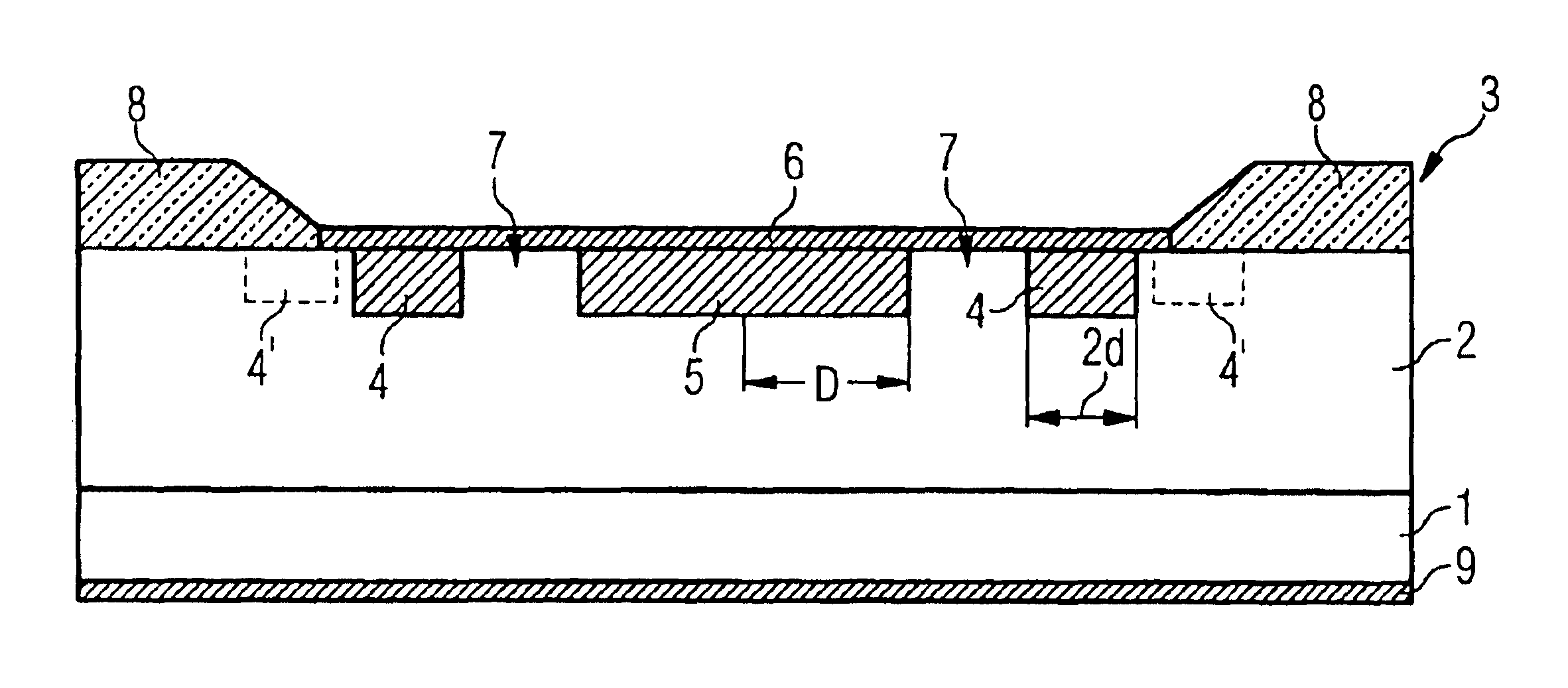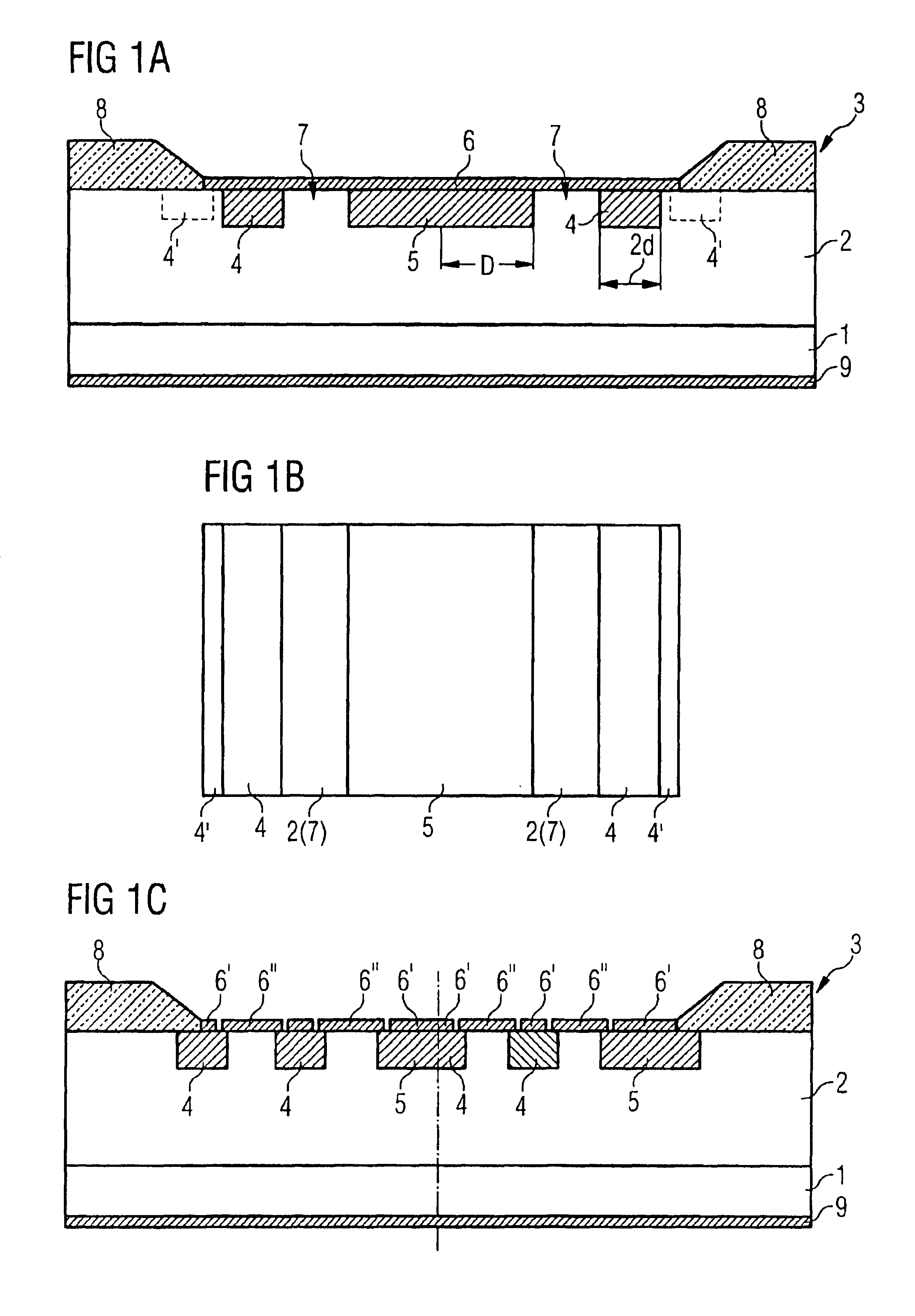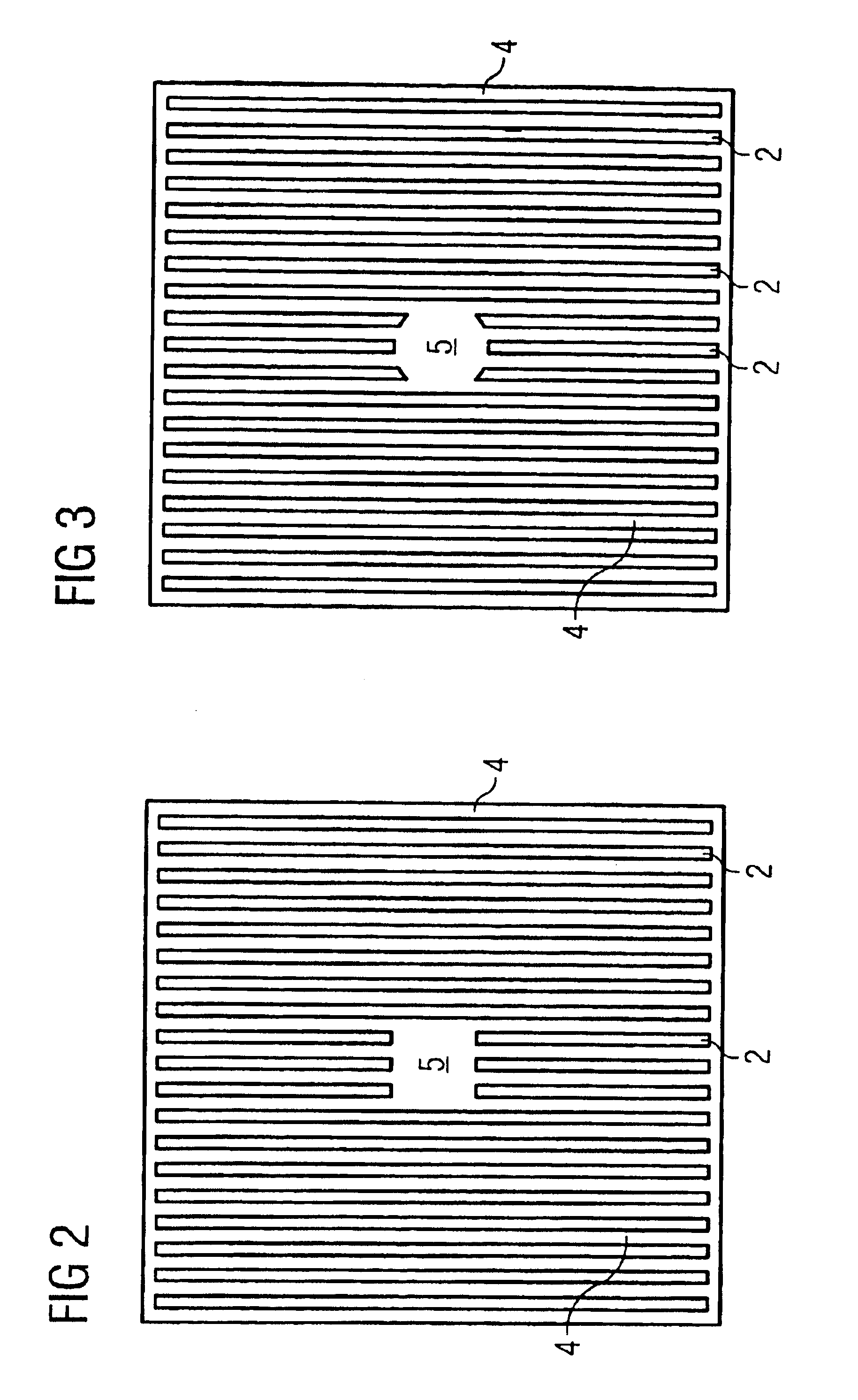Schottky diode having overcurrent protection and low reverse current
a diode and reverse current technology, applied in the field of schottky diodes, can solve the problems of reducing the electrical field strength at the rated voltage, reducing the forward voltage of the schottky diode, and causing the diode to be significantly more forward voltage, so as to achieve good resistance to overcurrents and low forward voltage
- Summary
- Abstract
- Description
- Claims
- Application Information
AI Technical Summary
Benefits of technology
Problems solved by technology
Method used
Image
Examples
Embodiment Construction
FIG. 1A shows, on an n-doped silicon carbide substrate 1, an n-doped silicon carbide layer 2, which is, for example, deposited epitaxially and in whose surface area p-doped regions 4, 5 which are in the form of strips are incorporated. The width of the region 5 which is in the form of strips is in this case greater by a factor of 3 than the width of the regions 4 which are in the form of strips.
The edge should preferably be p-conductive. This can be achieved, for example, by means of an additional p-conductive region 4′, which may be cohesive with the region 4 closest to it, or alternatively may be separate from it. However, it is likewise also possible to provide a region 4 directly as the edge. The region 4′ may also be doped more strongly or more weakly than the region 4.
Even though only one broad region 5 and two narrow regions 4 are provided in FIGS. 1A and 1B, it is self-evident that considerably more narrow regions 4 as well as more than one broad region 5 may be provided.
The...
PUM
 Login to View More
Login to View More Abstract
Description
Claims
Application Information
 Login to View More
Login to View More - R&D
- Intellectual Property
- Life Sciences
- Materials
- Tech Scout
- Unparalleled Data Quality
- Higher Quality Content
- 60% Fewer Hallucinations
Browse by: Latest US Patents, China's latest patents, Technical Efficacy Thesaurus, Application Domain, Technology Topic, Popular Technical Reports.
© 2025 PatSnap. All rights reserved.Legal|Privacy policy|Modern Slavery Act Transparency Statement|Sitemap|About US| Contact US: help@patsnap.com



